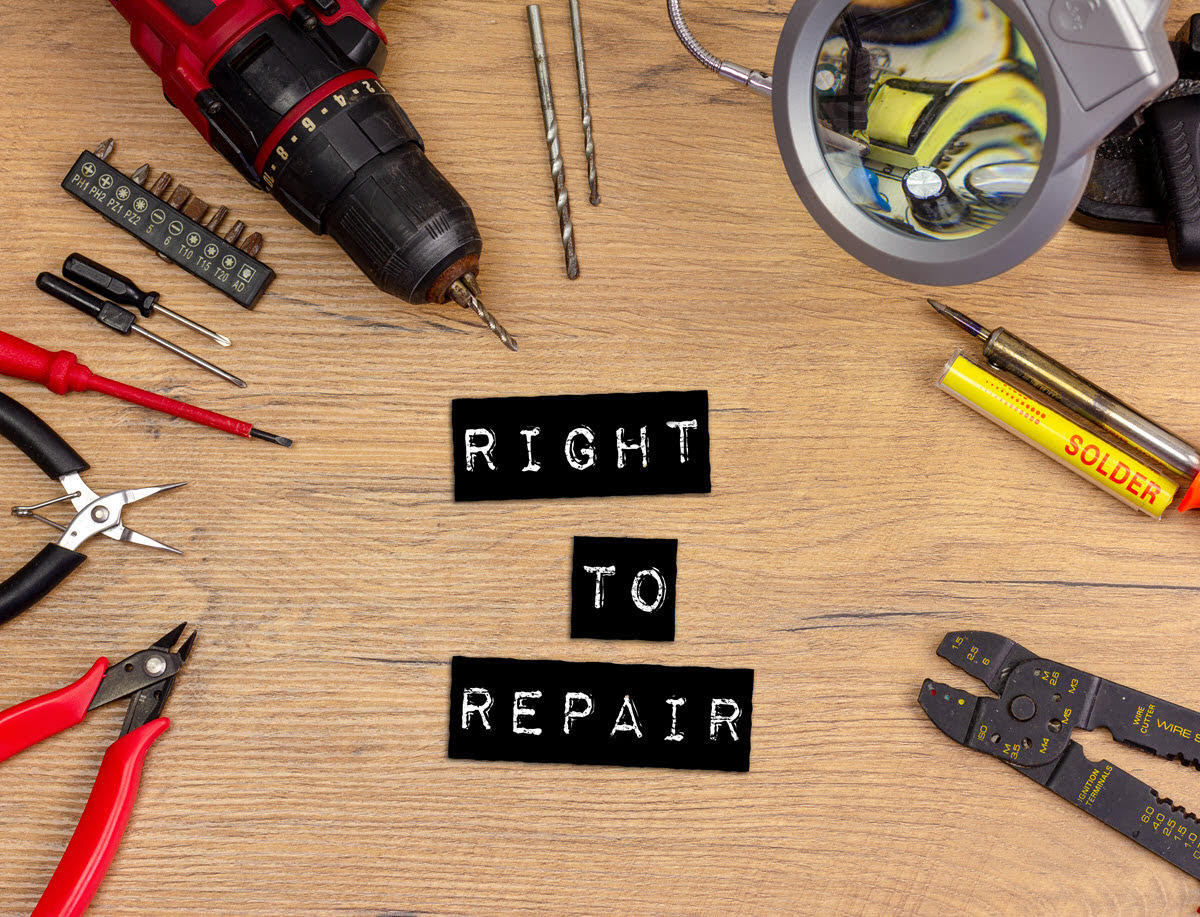Successful business models are prized for their ability to drive up sales numbers and earn healthy profits – but there is often a cost associated with runaway success: consumers can come to resent what they perceive as unfair business practices.

What we now call the “razor and blades” business model was first popularized in the 1920s by the Gillette razor company. Consumers loved the cheap razors but loathed shelling out for the expensive blades.
The razor and blade model predates Gillette, who was inspired by Standard Oil’s practice during the late nineteenth century of selling heavily discounted oil lanterns – and expensive oil to fill them.
Other classic razor and blade examples include Kodak’s cheap and cheerful consumer cameras (that used expensive film and disposable flash bulbs) or the more recent introduction of cheap inkjet printers (which require pricy ink cartridges.)
Planned obsolesce is another business model strategy that got its foothold in the late 1920s as GM’s head of styling Harley Earl pioneered the annual fall model year change, designed to drive consumer demand by making existing vehicles look out of date.
Critics of planned obsolescence maintain it is inherently wasteful and adds unnecessary burdens on the environment.
Do You Own Your Product Anymore, or are You Just Renting It?
These days, offering “connected products” has become the business model of choice, but it too has a downside, as consumers realize they no longer “own” all of their purchases.
This practice started in the software industry, which thanks to the ubiquity of the internet, has shifted to a “software as a service” business model – forcing customers to essentially rent rather than own. The inflection point took place around 2010 – 2012 when Autodesk first made its industry-standard AutoCAD design software available via subscription, followed soon after by Adobe which moved its many creative software offerings (such as Photoshop) to the cloud.

As a business model, software subscriptions are genius. They reduce software piracy and eliminate the costly boom-bust cycle of having to convince users to purchase an upgrade to the latest version.
Yet it turns out the practice of “renting” access to software is not new; in the postwar dawn of IBM’s reign over corporate mainframe computers, IBM famously leased their systems (including tabulating cards), never allowing them to be sold outright or copied by other manufacturers – that is until the Justice Department stepped in to reach a 1956 consent decree limiting IBM’s monopolistic business practices.
Digitalization: The Drive to Make Every Device a Connected Service that Productizes Data
The advantages of the “software as a service” business model was not lost on the manufacturing industry – inspired by the likes of software platforms such as Facebook, whose “first mover advantage” helped it leverage Metcalf’s Law and the Network Effect to grow bigger and bigger.

These days, nearly every industry has sought to pursue this path of digitalization – hoping to turn their products into the next blockbuster connected device “platform.”
Industry advocates point to the early successes of this digitalization process, from the On-Star satellite service that can dial 911 after a vehicle crash to the ACARS system that alerts airlines and jet engine manufacturers of maintenance issues occurring in flight.
When questioned whether these practices infringed on consumers’ rights to repair or upgrade products they “own,” industry lobbying groups argued that tampering with embedded computer systems should be off-limits to consumers to assure system integrity and reliability.
In many cases, the government agreed with the industry’s point of view; for example, consumers cannot legally alter computer chips in vehicles that control safety features (such as airbags) or emission control devices.
Embedded Systems Allow Manufactures to both Giveth and Taketh Away
However, there are examples where the manufacturers’ control over embedded computer systems appears to be motivated by the ability to prevent consumers from purchasing cheaper compatible third-party consumables and accessories or turning to independent repair shops instead of factory dealerships.
One of the most egregious examples has to be computer chips embedded inside disposable ink jet cartridges. Canon printers are notorious for this, and consumer advocates complain that these chips force customers to buy Canon ink at a cost of up to $12,000 per gallon.
(For schadenfreude fans, the recent pandemic chip shortage caused Canon to switch chip providers, causing some recent Canon printers to no longer recognize OEM Canon ink cartridges. Oh, the sweet irony.)

The Emergence of the Right to Repair Movement
In the larger scheme of things, most consumers shrug off the high cost of things like OEM print cartridges as one of modern life’s inconveniences.
However, when John or Jane Doe take their vehicle to a trusted local car mechanic for maintenance – only to find out the mechanic can’t fix their car because the manufacturer has “locked them out” of the car’s computer system – consumers can get pretty angry.
Car mechanics first dodged the lockout bullet in the 1990s when the Federal government mandated car manufacturers add a standardized “OBD-II” diagnostic port to allow scanners easy access to data from the car’s computers, including the engine control unit (ECU) that monitors air pollution control sensors.
At the time, some manufacturers objected to “opening up” the data to third-party mechanics, hoping instead to keep the data proprietary (which would be a boon to their dealer’s service departments) – but the Feds shot this down.
However, by the early 2000s, car manufacturers began to computerize more and more functions while at the same time preventing individuals outside the dealer network from accessing repair documentation and crucial computer software diagnostic tools.
Independent car mechanics across the country began to organize, creating new lobbying groups to advocate for the legal “Right to Repair” products.

Massachusetts Affirms the Right to Repair Your Car with Two Contested Ballot Initiatives
Starting in the early 2000s, Right to Repair lobbying groups brought the fight to state and federal legislatures. While they had some initial success in proposing state laws (even in conservative South Dakota), none of these bills were passed into law.
It wasn’t until 2012 that Massachusetts put the issue of repairing your own motor vehicle on a statewide referendum.
After a very contentious campaign between Right to Repair advocates and lobbying groups representing manufacturers who opposed the measure, the Massachusetts “Right to Repair” Initiative measure passed in 2012.
A second version of this Massachusetts Right to Repair Initiative passed again in 2020, which extended to scope of the original law to include creating open, accessible standards for “telematics,” e.g. features that “phone home” and transmit data to the manufacturer’s computer server.
During these campaigns, motor vehicle industry lobbying groups, such as the Coalition for Safe and Secure Data (sponsored by the Automotive Alliance for Innovation), reportedly spent $25 million to dissuade Massachusetts voters from passing Right to Repair laws.
Some of the claims were untested in court, such as the assertion that the Right to Repair infringed on copyrights and violated the DRM (digital rights management) terms of service agreements (TOSA) covered under the DMCA (Digital Millennium Copyright Act). Claims were also made that Right to Repair would open up vehicles to “hackers” – with some even suggesting this would enable predators to access private consumer data.
After the laws passed, some car manufacturers, including Kia and Suburu, turned off some telematics-based features in cars sold in Massachusetts, which some saw as unnecessary retaliation.
The Unstoppable Force meets the Immovable Object: Farmers
At first, the manufacturing industry might have brushed off the Right to Repair movement as a fringe effort by ultra-liberal Massachusetts and libertarian groups like the Electronic Frontier Foundation (EFF), which advocate for open-source software.
However, when the Right to Repair issue caught fire among farmers in the Midwest – furious that they could not repair their John Deere Tractors ‑ the proverbial fit began to hit the shan.
By the late 2010s, farm tractors had transformed into “computers on wheels,” with GPS-based features, such as automatic steering that allowed them to plow, seed, and harvest fields with amazing accuracy, all the while collecting detailed data on soil conditions, fertilizer coverage, and more.
As amazingly useful as this computer technology was, it was also often proprietary – meaning farmers could no longer fix their tractors by themselves without taking them to the dealer.
When the issue came to a boil, the main source of frustration, the John Deere tractor company, blinked and reached a consent agreement with farmers in 2018 that they would open up their proprietary systems within 5 years.
But it’s now 2023, and farmers are furious once again, as they claim John Deere has not honored their Right to Repair commitments made in 2018.
Electronic Gadgets Get Regulated in New York as the EU Proposes New Right to Repair Rules
Automobiles and tractors are not the only products accused of limiting consumers’ right to repair.
Electronic devices, such as smartphones, have also come under fire for making it difficult for consumers to replace cracked screens or batteries that wear out.

The Right to Repair movement gained further momentum in 2022 when New York state passed the Digital Fair Repair Act, mandating that OEMs must provide third-party vendors access to the necessary repair parts and information to fix electronic devices.
The new law goes into effect in July 2023.
Apple and Microsoft are two manufacturers who have acknowledged the need to comply with the law, and it may spur them to offer similar concessions nationwide.
Meanwhile, the European Union began looking at the Right to Repair issue in 2020, and while new regulations are still in the proposal stage, the EU has demonstrated it is ready to act. (It recently required Apple to discontinue its Lightning charging port in favor of an EU-wide USB C port standard to reduce electronic waste.)
Nokia, once the world leader in handheld phones, sensed an opportunity to re-enter the market for mobile devices. It recently showcased a new smartphone built around a collection of replaceable modules, allowing consumers and technicians easy access to components, including the battery and touchscreen.
Telematics: You Can’t Fix Data or Features that are Out of Your Control
We predict that tensions between consumer rights organizations and manufacturers will continue to flare up, particularly over what is emerging as the most contentious issue – telematics.
In their attempt to maximize subscription revenue or limit long-term maintenance costs for obsolete products, many manufacturers are doing a fantastic job of generating the worst kind of bad publicity when it comes to their cringeworthy telematics policies:
- BMW announced plans to charge customers a monthly subscription fee to turn on the heated seats built into their vehicles.
- Ford made a patent application for an “over-the-air” system to progressively turn off important car features until an owner made good on late car payments. They also filed a claim for an over-the-air system that instructs the car to “repossess itself,” e.g. drive itself back to the dealership unattended.
- Tesla was involved in a dispute where it remotely turned off optional AutoPilot features when one of its used cars was sold, claiming these features didn’t transfer to new owners and must be repurchased anew. (This is now reportedly resolved after a big uproar.)
- Volkswagen wouldn’t help police in Illinois urgently searching for a hijacked VW SUV with a two-year-old toddler in the backseat until a $150 credit card payment was made to VW to reinstate the vehicle’s satellite system to pinpoint the location of the vehicle.
Consumer advocates and environmentalists are also angry when manufacturers choose to turn off telematic access for older products, claiming they have reached their “End of Life.”
A good example is the recent controversy over security cameras made by Arlo Technologies. When the company turned off its remote video storage feature on its older cameras, consumers were outraged. (The company has since reversed its policy due to the bad publicity.)
However, environmentalists and consumer advocates are frustrated that many products (from smart TVs to smartphones) get “obsoleted” far too soon. They claim manufacturers want to save money by curtailing updates for older products – preferring instead to steer consumers to buy their newer models.
The timeframe until most electronic products are made obsolete varies, but it’s generally between 4 and 6 years. Some products may work just fine after they are deemed obsolete by the manufacturer, but they can become more vulnerable to hacking without recent security updates.
Environmentalists say this kind of forced obsolesce sends electronic devices to landfill dumps before their time.
US Congress May Take Up Action on the Right to Repair
These recent “egregious” bad faith actions by manufacturers may also breathe new life into the Right to Repair movement.
The Federal Trade Commission (FTC) voted in July 2022 to make the Right of Repair issue a priority in their policy and enforcement actions.
President Biden commented on the problem in January 2023, “if you own a product, from a smartphone to a tractor, (in many cases) you don’t have the freedom to choose how or where to repair that item you purchased.”
Meanwhile, in Congress, a Republican and a Democratic representative introduced a bi-partisan proposal, the Freedom to Repair Act, which would reform copyright law to facilitate repairs by consumers and independent repair shops.
Separately, another bill was introduced to require vehicle manufacturers to provide vehicle owners and independent mechanics with access to detailed repair manuals and specialized tools needed to repair their vehicles outside of a dealership.
We’ll be monitoring the situation to find out if any of these proposals become the law of the land.

Formaspace is Your Manufacturing Partner
If you can imagine it, we can build it, here at our Formaspace factory headquarters in Austin, Texas.
Talk to your Formaspace Design Consultant today about how we can work together to make your manufacturing facilities, product development labs, and material handling operations more productive and efficient.











